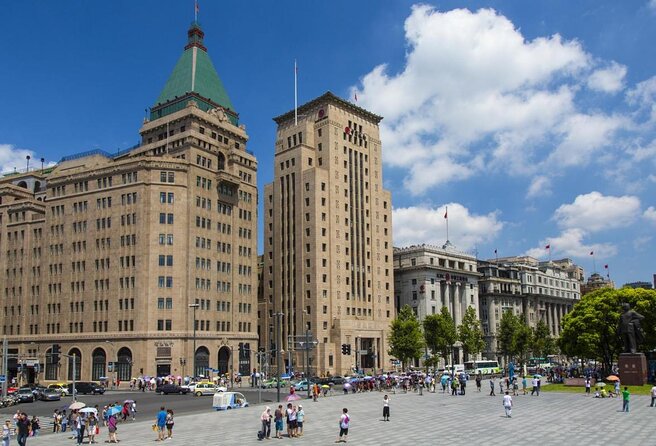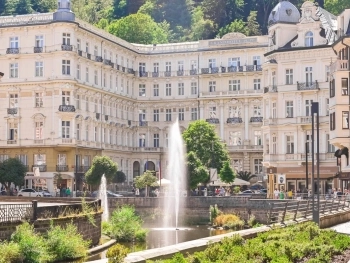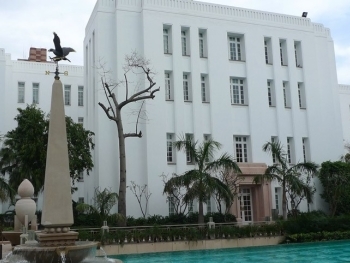Peace Hotel stands as one of Shanghai’s most historic and architecturally iconic buildings. Located along the Bund, Shanghai’s famous waterfront promenade, the Peace Hotel has represented luxury, elegance, and culture in the city for nearly a century. Originally opened in 1929 as the Cathay Hotel by the legendary businessman Sir Victor Sassoon, it quickly became a center of Shanghai's social life and a landmark of international hospitality in China. Known for its distinctive Art Deco style and illustrious guest list, the Peace Hotel continues to be one of Shanghai's most beloved cultural landmarks. This article explores the hotel's rich history, architectural significance, role in Shanghai’s social and cultural life, and modern appeal.
Origins and Founding of the Peace Hotel
Sir Victor Sassoon and His Vision for the Cathay Hotel
Sir Victor Sassoon, a British businessman of Jewish-Iraqi descent, was a major figure in early 20th-century Shanghai, investing in real estate and helping shape the city’s skyline. As part of his vision to create world-class establishments, Sassoon constructed the Cathay Hotel (now Peace Hotel) in 1929, envisioning it as Asia’s finest hotel and a symbol of Shanghai’s emerging cosmopolitan status.
The Cathay Hotel was built on the Bund, Shanghai’s bustling financial district along the Huangpu River, where Western architecture and Chinese culture intersected. The hotel quickly gained a reputation as one of the most luxurious establishments in Asia, becoming a social and cultural hub for wealthy travelers, diplomats, celebrities, and international business elites.
A Hotel with International Appeal
From its inception, the Peace Hotel catered to an international clientele. Sassoon’s attention to detail, commitment to luxurious amenities, and dedication to high standards of service ensured the Cathay Hotel’s success. By the 1930s, it had become a symbol of Western opulence in Shanghai, offering travelers and residents alike a glamorous escape in the city. The Peace Hotel was particularly popular among Western expatriates, wealthy Chinese, and influential figures who valued its exclusivity and prime location.
Architectural Marvel: The Art Deco Grandeur of the Peace Hotel
A Pioneering Art Deco Design
The Peace Hotel is known for its Art Deco architecture, a style that was gaining popularity in the 1920s and 1930s. Designed by British architect Palmer and Turner, the building’s structure and interiors showcase an iconic Art Deco style that set it apart from other buildings on the Bund. The hotel's exterior, with its distinct green copper pyramid-shaped roof and granite facade, became one of Shanghai’s defining architectural features.
Inside, the Peace Hotel’s design reflects luxurious Art Deco influences, with elaborate chandeliers, geometric patterns, polished marble floors, and a combination of Western and Eastern decorative elements. The main lobby and corridors are adorned with rich wood paneling, intricate ironwork, and vintage fixtures that add to its timeless charm.
The Octagonal Dome and Other Notable Features
One of the most celebrated architectural features of the Peace Hotel is its octagonal glass dome, which illuminates the main lobby. The dome is intricately designed, featuring a blend of stained glass and geometric patterns that showcase the elegance and artistry of Art Deco design. The dome’s soft lighting adds a dramatic effect, creating an atmosphere of grandeur as guests enter the hotel.
Another remarkable element is the hotel’s legendary Jazz Bar, where live jazz music has been performed since the 1930s. The bar’s vintage decor and ambiance transport guests back to Shanghai’s golden age, providing a unique connection to the city’s past.
The Golden Age of the Peace Hotel: Social Hub of Shanghai
Famous Guests and Glamorous Events
Throughout the 1930s and 1940s, the Peace Hotel (then the Cathay Hotel) attracted a notable list of guests, including politicians, actors, musicians, and business tycoons. Sir Victor Sassoon’s own residence was located in the penthouse suite, and he hosted extravagant parties and social events attended by Shanghai’s elite and international celebrities. The hotel’s grand ballroom became famous for its lavish dances, dinners, and gatherings, where prominent personalities mingled and enjoyed Shanghai’s thriving nightlife.
Distinguished guests who stayed at the hotel included American playwright Noel Coward, British Prime Minister Winston Churchill, and actress Marlene Dietrich, adding to the hotel’s reputation as a glamorous and prestigious destination. The hotel was an integral part of Shanghai’s vibrant social scene, contributing to its status as a “Paris of the East.”
The Jazz Age: Music and Culture at the Peace Hotel
One of the Peace Hotel’s most iconic elements is its jazz bar, which has hosted live performances since the 1930s. Jazz was a defining feature of Shanghai’s nightlife during this period, reflecting the city’s open attitude toward Western culture. The Peace Hotel’s jazz band, often composed of elderly Chinese musicians, has been a continuous presence, drawing both locals and international visitors who come to experience Shanghai’s jazz heritage.
The jazz bar, with its intimate setting and nostalgic decor, remains one of the few places in China where guests can listen to traditional jazz in a historic setting. The bar has become a beloved institution in Shanghai, attracting music lovers and history enthusiasts who appreciate its cultural significance and ambiance.
Changes through the Years: From the Cathay Hotel to the Peace Hotel
Transition During the Communist Era
In 1949, with the establishment of the People’s Republic of China, the Cathay Hotel underwent significant changes. The new Communist government nationalized private enterprises, and the hotel was renamed the Peace Hotel. While the hotel continued to operate, it no longer served as a center for elite gatherings and international diplomacy. During the years of economic and political transformation, the hotel’s focus shifted, but it remained an iconic landmark on the Bund, admired for its architectural beauty.
In the decades following, the Peace Hotel continued to be an important part of Shanghai’s urban landscape, weathering the shifts of China’s political climate while retaining its historical charm. In the 1980s, as China began to open up economically, the Peace Hotel started attracting tourists interested in experiencing Shanghai’s historical and cultural heritage.
The 2010 Renovation: Restoring the Peace Hotel’s Grandeur
In 2010, after a major renovation and restoration project, the Peace Hotel reopened as part of the Fairmont Hotels and Resorts group. The restoration aimed to preserve the building’s historical elements while updating its facilities to meet modern luxury standards. The project carefully maintained the hotel’s Art Deco design, restoring original features such as the octagonal dome, marble floors, and wood paneling, while upgrading rooms and amenities.
The renovation also revitalized the Peace Hotel’s Jazz Bar and ballroom, reestablishing them as key attractions for both local and international visitors. Today, the Peace Hotel continues to celebrate its legacy, offering guests a blend of historical charm and contemporary luxury.
The Peace Hotel Today: A Destination for Luxury and History
Luxurious Rooms and Suites with a Historic Touch
The Peace Hotel offers a range of rooms and suites that reflect its historical elegance, complemented by modern comforts. Each room is uniquely decorated with Art Deco furnishings, vintage accents, and luxurious fabrics that create an atmosphere of timeless sophistication. The suites, including the famous Sassoon Presidential Suite, feature spacious layouts, elegant decor, and exclusive views of the Bund and the Huangpu River.
Many rooms are inspired by various countries, giving guests a sense of Shanghai’s cosmopolitan past. The personalized service and luxurious amenities add to the Peace Hotel’s charm, making it a favored destination for travelers who appreciate both history and comfort.
Dining and Entertainment: The Jazz Bar and Fine Cuisine
The Peace Hotel offers several dining options that cater to a variety of tastes. The Dragon Phoenix restaurant, located within the hotel, specializes in authentic Shanghainese and Cantonese cuisine, allowing guests to sample traditional Chinese flavors in a sophisticated setting. The Cathay Room, with views overlooking the Bund, offers a fusion of Western and Asian dishes, appealing to international palates.
The Jazz Bar, however, remains the hotel’s most famous attraction. Known as the longest-running jazz bar in China, it has become a symbol of Shanghai’s musical heritage. The bar’s ambiance, vintage decor, and talented jazz band provide a unique experience that connects guests to Shanghai’s cultural history.
The Legacy and Impact of the Peace Hotel
A Cultural and Architectural Landmark of Shanghai
The Peace Hotel has become an enduring symbol of Shanghai’s historical and cultural heritage. Its distinct Art Deco design, prime location on the Bund, and storied past have cemented its status as one of China’s most famous hotels. The hotel represents a bridge between East and West, offering a unique perspective on Shanghai’s cosmopolitan history and its role as a gateway to Asia.
A Destination for Cultural Heritage Tourism
Today, the Peace Hotel attracts travelers from around the world who wish to experience a piece of Shanghai’s past. Its blend of luxury, history, and cultural significance makes it a popular choice for visitors who appreciate historic hotels and heritage tourism. The Peace Hotel is not only a place to stay but also a window into Shanghai’s golden age, providing an immersive experience of the city’s art, music, and architectural beauty.
Peace Hotel in Shanghai, China, is more than just a luxury hotel; it is a historical icon that captures the essence of Shanghai’s past and present. From its origins as the Cathay Hotel under Sir Victor Sassoon’s vision to its role in today’s cultural tourism, the Peace Hotel remains a beloved landmark of Art Deco design and cosmopolitan history. Its rich heritage, remarkable architecture, and status as a cultural hub ensure that it continues to draw visitors who seek to experience the allure and elegance of Shanghai. Whether you are a history enthusiast, architecture lover, or simply in search of luxury and comfort, the Peace Hotel offers a unique and unforgettable experience in one of the world’s most dynamic cities.












